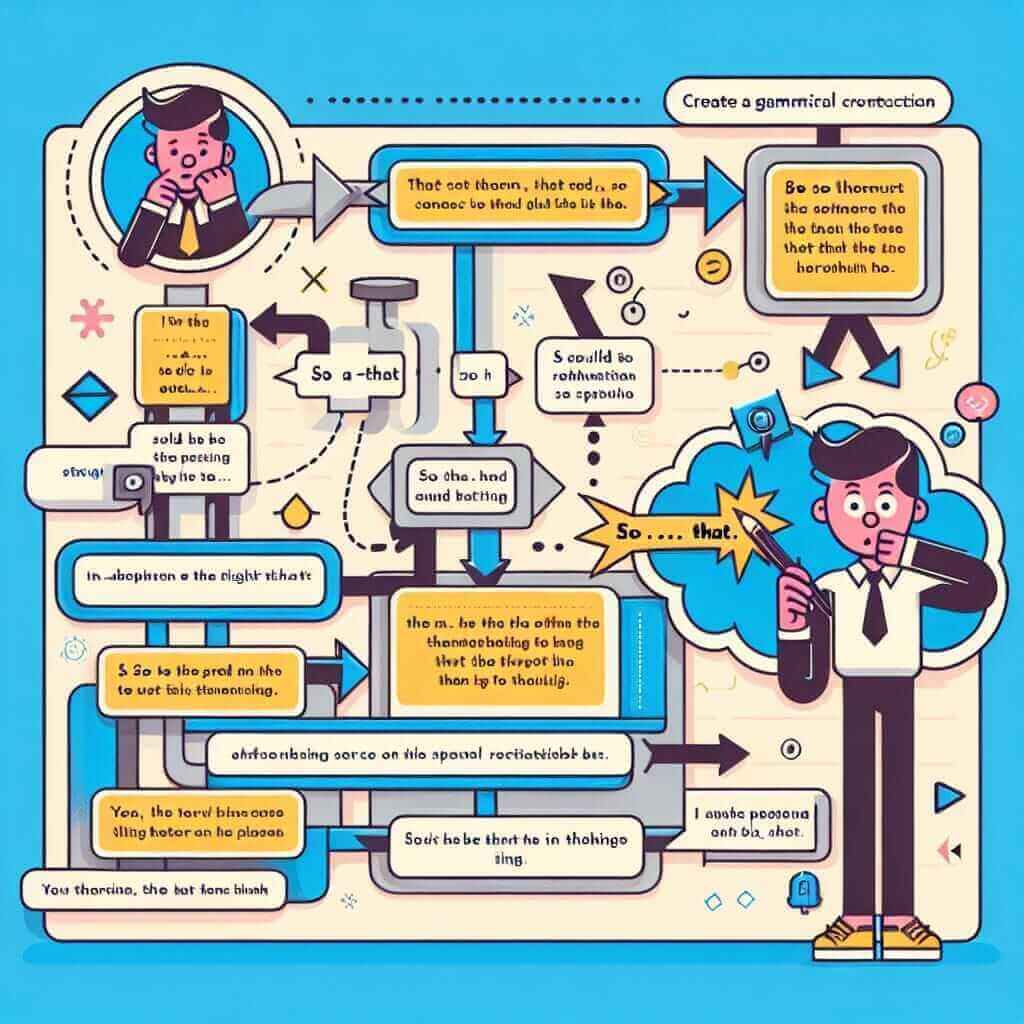Have you ever encountered a sentence like “So complex was the problem that few solved it” and wondered about the grammar at play? This structure, while elegant and impactful, can seem a little daunting at first glance. Fear not, aspiring IELTS achievers! This article delves into the intricacies of the “so… that…” construction, equipping you with the knowledge and skills to utilize it confidently in your IELTS writing and potentially boost your band score.
Let’s start by examining some examples of how this structure appears in different IELTS contexts:
Speaking (Part 3):
- “The impact of social media on our lives is so pervasive that it’s hard to imagine a world without it.”
Writing (Task 2):
- “Some argue that globalization has created a world where cultural differences are fading. So powerful is this trend that many fear the loss of unique traditions.”
Listening (Section 4):
- “Professor Smith noted that the research findings were so compelling that they warranted a complete rethink of existing theories.”
In each of these cases, the “so… that…” structure emphasizes the intensity of something (complexity, pervasiveness, power) and the significant consequence it produces.
Deconstructing “So… That…”
Meaning and Usage:
At its core, the “so… that…” construction expresses a cause-and-effect relationship. It highlights an extreme degree of a particular quality or condition, leading to a notable outcome.
Frequency in IELTS:
While not as frequent as simpler structures, “so… that…” appears often enough across IELTS sections to merit your attention. Mastery of this construction demonstrates a sophisticated grasp of grammar and allows you to express ideas with nuance and emphasis.
The Formula:
Here’s the structure broken down:
[So + adjective/adverb + auxiliary verb + subject + main verb] + [that + result clause]
Example:
- So complex was the problem that few solved it.
- So – Introduces the degree of complexity.
- Complex – The adjective describing the problem.
- Was – The auxiliary verb, inverted with the subject (“the problem”).
- The problem – The subject of the sentence.
- That – Connects the cause and effect.
- Few solved it – The result of the problem’s complexity.

Applying “So… That…” in Your IELTS Exam:
Writing (Task 2):
Original: “Climate change is a serious problem with potentially disastrous consequences.”
Enhanced: “So severe is the threat of climate change that it demands immediate, coordinated global action.”
Analysis: The “so… that…” structure adds a sense of urgency and emphasizes the gravity of the situation, making your writing more impactful.
Speaking (Part 3):
Original: “Technology has drastically changed the way we communicate, making it much faster.”
Enhanced: “So rapid has been the evolution of technology that we now communicate in ways unimaginable just a few decades ago.”
Analysis: Using “so… that…” elevates your language, demonstrating a wider range of grammatical structures and your ability to express complex ideas effectively.
Aiming Higher: Variations and Alternatives
To further enhance your writing and demonstrate fluency, consider these variations:
- “Such… that…”: “Such was the complexity of the problem that few solved it.” (Formal, emphasizes the noun ‘complexity’)
- Inversion with other adverbs: “Rarely had they encountered a challenge so daunting.” (Adds variety and sophistication)
Common Pitfalls to Avoid:
- Incorrect word order: Remember the inversion! Don’t write, “So complex the problem was…”
- Overuse: Like any complex structure, using “so… that…” too often can sound forced. Employ it strategically for emphasis.
Conclusion
By mastering the “so… that…” construction, you add a powerful tool to your IELTS writing arsenal. This structure enables you to express cause-and-effect relationships with emphasis and sophistication, potentially boosting your band score. Remember to practice implementing it in various contexts and familiarize yourself with common errors to avoid.